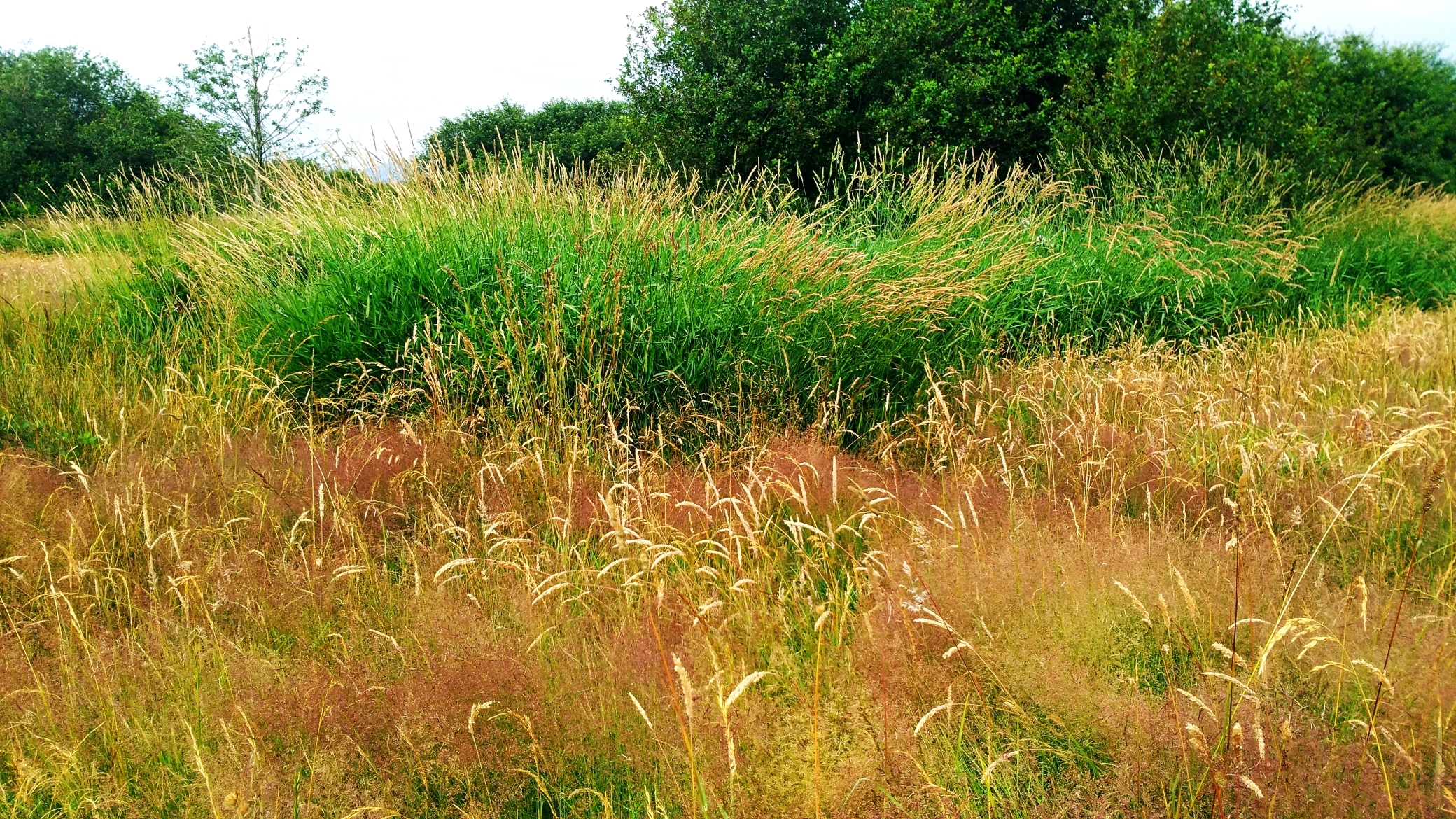Project Watershed is Battling Reed Canary Grass
Few species will eat it and it grows too thickly for animals or waterfowl to use it for cover or nesting. Foraging juvenile salmon have feeding opportunities reduced in areas dominated by this grass. It also out-competes trees and shrubs which provide important stream-side cover and keep water temperatures cooler. In particular, dense stands are starting to form in the Hollyhock Marsh conservation area, Dyke Slough and the lower reaches of Mallard Creek. In fact it is starting to constrict the creek impeding fish access.
As part of our work to control and manage this invasive grass we have been doing some test treatments. Specifically mowing, mowing/shading (with cardboard) and digging it out. We are currently monitoring how effective these treatments are, and we will soon be developing a control plan for long-term management of this invasive plant. You may notice our crew out in the estuary this summer doing some of this work. If you come across areas where we are working on controlling the grass with cardboard we ask that you not disturb these sites.
We would like to acknowledge the financial support we have received for this project from the Fish and Wildlife Compensation Program and the cardboard that has been kindly held and donated by Mountain City Cycle.
We are looking for volunteers to help with this work. Specifically, we need volunteer help to:
1. Prepare cardboard – we have been using large bicycle boxes. All metal staples, tape, and plastic labels need to be removed from the boxes before we can use them for shading.
2. Prepare coat-hanger “stakes” for staking down cardboard shading. This involves using wire cutters to cut metal coat hangers, bending the hangers into stakes, and tying a piece of biodegradable flagging tape to each stake.
3. Lay out and stake cardboard over patches of mowed reed canary grass in the estuary. This work involves walking on uneven and slippery terrain.
4. Dig out small patches of reed canary grass.
Questions?
Please contact Bea Proudfoot at: maps.projectwatershed@gmail.com or 250-703-2871.
Related Posts
Gwen Janz
Meet our new Forage Fish Lead Biologist!
Eelgrass Update
In the fall our restoration team surveyed the three eelgrass beds which were planted with the help of our volunteers back in June. The beds are looking healthy!
Kus-kus-sum: End of Season Wrap-up
Now that we have put the Kus-kus-sum site to bed for the winter, we wanted to give you all a little update on how things progressed this season – lots happened!
Kate McKeown
Meet our new Forage Fish Technician!
Greenshores at Dyke Road Park – Reimagining a Park
On September 20 and 21, over 20 people were on site to help with planting at the Comox Valley Regional District’s (CVRD) Dyke Road Park redevelopment project.
Gartley Beach Green Shores for Homes Project
Project Watershed is teaming up with the CVRD and the Stewardship Centre for BC to do some shoreline restoration at Gartley Beach in Royston.


